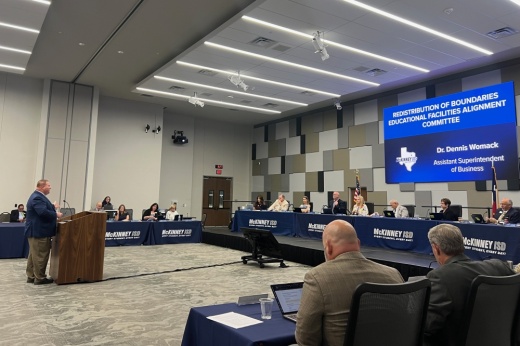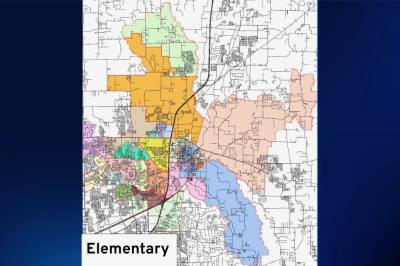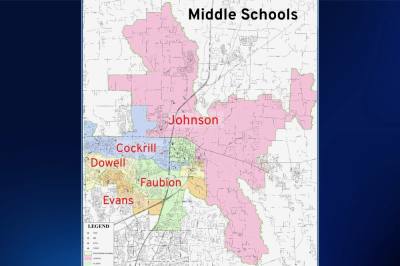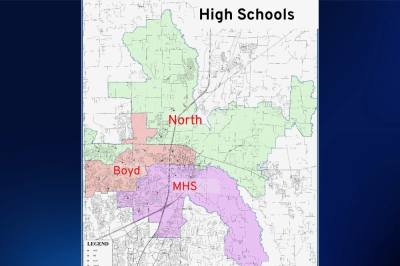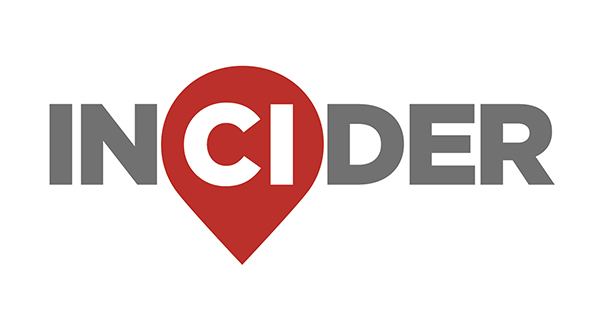McKinney ISD board of trustees will consider the formation of an educational facilities alignment committee at a September meeting. If formed, the committee will study both current school attendance zones and project population growth, and recommend zone changes, according to a presentation at an Aug. 18 board meeting.
The specifics
Assistant Superintendent of Business Operations Dennis Womack said that data from demographics studies company Zonda Education shows that schools in the district’s northwest sector are expected to see significant enrollment growth, while the southern region will see stagnant enrollment with some slight declines.
At the elementary level, three schools in north McKinney—Frazier, Press and Webb elementary schools—are projected to each have more than 1,000 students enrolled by the 2034-35 school year based on existing attendance zones, district documents state.
“Three schools trying to educate 2,500 in five years and 3,300 in ten years is probably not going to be realistic for us,” Womack said of the totaled projections for Frazier, Press and Webb elementary schools. “[We] need to rebalance as much as we can with the existing infrastructure that we have will be needed for that northwest area.”
The southern portion of the city includes 16 elementary school zones, with most expecting to see a slight decline in enrollment, according to the presentation.Womack noted that at the elementary school level, declining enrollment can be linked to rising property values, noting that young families with elementary aged children are less likely to be able to afford a home in the district’s southwest area where home values are increasing.
“Its really about property values, and what young families can afford to purchase,” Womack said. “Unfortunately in this southwest area of the district, our home prices have outpaced what a new family can afford, especially starting with a kinder-aged student as ... your oldest child.”
Diving in deeper
Johnson Middle School is the only school out of the district’s five middle schools that projections show will future enrollment surpass its functional and design capacity.
Nearly half of the district is zoned for Johnson, Womack said, which is also located in the city’s high-growth northern area.
“A little of rebalancing in our middle school zones will help shift some of the population to the campuses where we have a little bit more space and allow for the growth in that Johnson area in the north,” Womack said.
McKinney North High School will see similar enrollment growth due to north McKinney population growth, the presentation stated. Based on current attendance zones, the school could see nearly 4,350 students enrolled by the 2034-35 school year while the district’s other two high schools would remain below 2,200 students enrolled.
The school’s attendance zone was previously adjusted to realign the new Painted Tree development into McKinney Boyd High School’s attendance zone, but additional adjustments will be needed, Womack said.“Some additional relief is going to be needed over the next year to definitely in five [to] ten years,” he said. “[McKinney North High School] today is sitting around 2,500 students, and that's a lot for that size campus."Looking ahead
On behalf of the district’s administration, Womack said a request to create an educational facilities alignment committee will be on the board’s September meeting agenda.
The committee would be tasked with:
- Studying the district’s short and long term projected enrollment
- Assessing campus student capacities and projected population shifts
- Recommending updated boundaries for each school level
If the committee’s formation is approved at the September meeting, the committee would meet from September to December. The committee’s recommendations would be presented at the board’s December meeting, the presentation stated.
For more information on the existing attendance zones for McKinney ISD, visit www.mckinneyisd.net/page/attendance-zones-maps.




